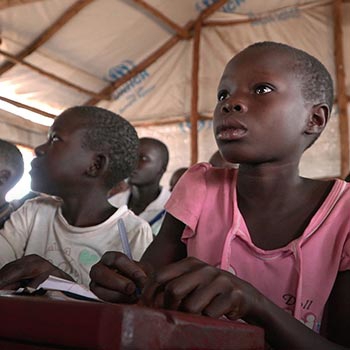Refugee Camps
Dadaab refugee complex (Kenya)
- Population (July 2022): 80,000 individuals
- Established in 2012
- Occupants: Syrian refugees
Located in northern Jordan, Za’atari is the world’s largest camp for Syrian refugees. It was established in 2012 to accommodate people fleeing Syria’s civil war and reached a peak of more than 150,000 people within the first year of its construction. Over 20,000 births have been recorded in Za’atari camp since its opening.
Today, Za’atari hosts more than 80,000 Syrian refugees and has evolved into an informal city that includes 32 schools, 58 community centers, and eight health facilities that operate alongside civil defense and community police. From cell phone stores to restaurants—refugees have set up almost 1,800 shops and businesses within the camp. Efforts to support refugees at the camp also include education and livelihood programs as well as the construction of the largest solar plant ever built in a refugee camp.
Despite the continued growth of Za’atari, the long-term sustainability of the camp has become a major concern a decade after construction. Most caravans, which replaced tents in 2013, are now in need of urgent repair. 70 percent of wall conditions in Za’atari are considered sub-standard and 7,000 refugees requested support for maintenance of roofs and windows in 2021 alone. Additionally, two thirds of refugee families in Za’atari camp are in debt with 92 percent of families reducing food intake or accepting high-risk jobs to make ends meet.
With no immediate solution to the Syrian conflict and humanitarian conditions deteriorating at a worrying pace, long-term solutions for all Syrian refugees in Jordan and beyond must be found.












